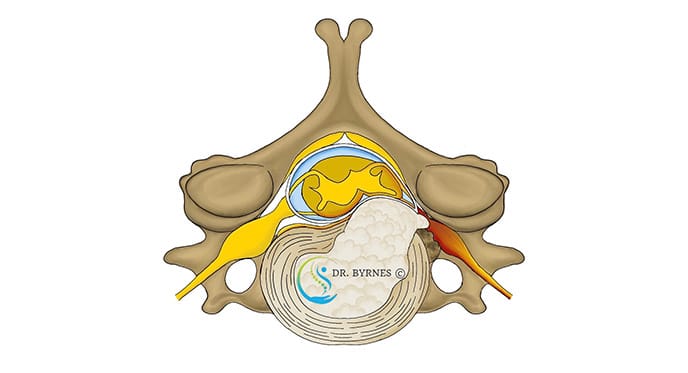
Cervical radiculopathy is the typical symptom of radiating arm pain, weakness and sensory disturbance due to the compression of nerve root(s) in the cervical spine.
The cervical nerve roots primarily subserve sensations in your arms and hands, resulting in symptoms perceived in the distribution of the nerves rather than solely at the site of the nerve compression in the neck. A few patients will describe severe arm pain and numbness with little or no pain in the neck.
The intervertebral discs are comprised of a leathery outer layer termed the annulus fibrosus and a softer jelly-like central component termed the nucleus pulposus. The slowly progressive and age-related degenerative processes result in the gradual mechanical deterioration of both. The central nucleus polposus slowly loses its ability to hold onto water, becomes increasingly dehydrated, and reduces in volume and height. Fissures can appear within its substance.
The outer annulus, made up of sheets of fibres in varying orientations, is, in health, extremely strong and able to contain the nucleus even when placed under significant pressure. With time, however, the fibres of the annulus deteriorate and can become incompetent—stretching or tearing of the fibres can allow the central nuclear material to herniate out of position.
Cervical Disc Herniation can then press on the cervical nerve roots, resulting in symptoms of pain, weakness, and sensory disturbance in the shoulders and arms, which can even radiate to the hand.
Furthermore, the herniated disc may compress the spinal cord, causing spinal cord dysfunction and neurological symptoms and signs in the lower limbs.
